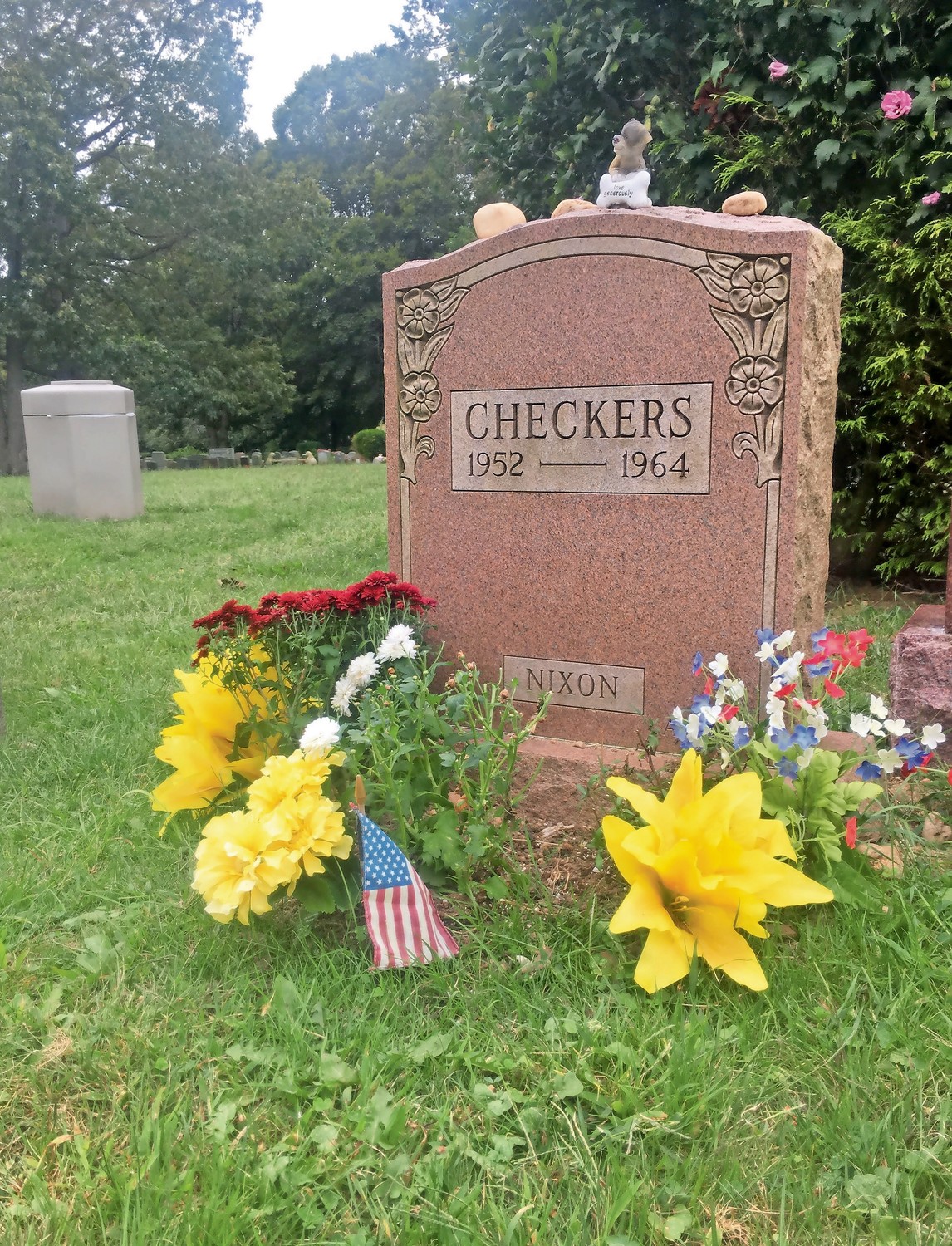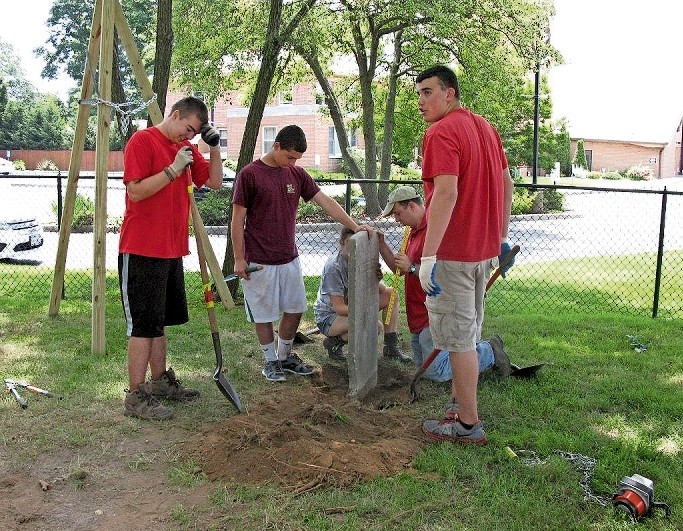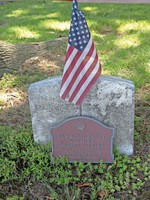Remembering Wantagh’s dead
Preservation Society aims to have cemetery landmarked
Cornelius Ryerson — who was born in 1752 in an area called Foster’s Meadow, which is now known as Valley Stream — was a loyalist during the Revolutionary War, but his father, George, was a patriot and a lieutenant in a Queens-based militia.
Because he was on the losing side of history, Cornelius fled to Digby, Nova Scotia, after the war, said Ellen Cook, the first vice regent of the Wantagh chapter of the Daughters of the American Revolution. Eventually, though, he returned to Long Island and owned farms in Wantagh.
Cook, 77, and fellow leaders of the Wantagh Preservation Society said they hope the Town of Hempstead will name the Ryerson family’s burial plot, on Bunker Avenue, a landmark. Recording Secretary Tom Watson, 63, said that although Cornelius Ryerson isn’t a household name like, say, George Washington, his final resting place is significant because he was part of Wantagh’s history.
“It’s interesting what families went through politically during the war,” Watson said. “I think it related to what we’re going through now. People had different political views, just like they do now, and they lived through it.”
If landmarked, the Ryerson Burial Plot would be the fourth cemetery in Wantagh to receive the designation. Watson noted that Wantagh has more landmarked sites — 12 in total — than any other community in Hempstead Town. The DAR, WPS, local scout troops and civic organizations work to keep the sacred cemeteries and other historic buildings clean, he added.
Jackson Cemetery, Quaker Cemetery and the Harold Avenue Cemetery are all town landmarks. Carol Poulos, the WPS curator, said that while some sites, like Jackson, have visible headstones, the graves disappeared, sank into the ground or were damaged over time.
Capt. John Seaman and Robert Jackson settled Wantagh, which was originally known as Jerusalem, in 1644. Members of the Jackson family were buried on family farms, scattered along what is now Wantagh Avenue but was simply called “the highway” in the community’s early days, until the cemetery was built. It sits next to St. Frances de Chantal Roman Catholic Church.
Fact and fancy are intertwined in the story of Wantagh’s oldest cemetery, according to a book published by the Wantagh American Revolution Bicentennial Committee in 1976. Cook recounted the tale of Richard Jackson’s daughter, Jane, who, according to legend, fell in love with a Hessian soldier named John Althause and eloped with him.
“A slave carried Jane on his back through the swamp to get to him,” Cook said.
“That’s a legend that hasn’t been proven true,” Poulos interjected.
“But it’s such a good story,” Cook noted.
Revolutionary and Civil War soldiers are buried in different historic cemeteries in Wantagh, which include family-owned burial plots and those with religious and ethnic affiliations. Two of the sites — the Old Burying Ground and the Harold Avenue Cemetery — were for African-Americans. The Old Burying Ground is the final resting place of many black Civil War veterans, Watson said, and Harold Avenue was a plot for freed Jackson family slaves and their descendants.
The Ryersons, Poulos noted, were Dutch — a rarity in Wantagh, as most settlers from Holland lived on the North Shore. Like the Harold Avenue Cemetery, the plot lies on private property.
Watson and Poulos said that deeds dating back to the 1860s refer to the Ryerson plot, which does not have headstones. Cook said she was interested to hear some of the pair’s research about the family, including a story about how Cornelius’s son, Jesse, was murdered on the way home from a business meeting.
“These were real, everyday people,” she said. “If they didn’t come before us, where would we be?”
Famous pets are also buried in Wantagh. Checkers, President Richard Nixon’s dog, which he famously referenced in a speech in 1953 in an attempt to answer charges that he abused a political expense fund, was laid to rest at Bideawee Pet Memorial Park, on Beltagh Avenue.
Ray Cushmore, Bideawee’s chief operating officer and vice president of finance and administration, said that Nixon was working for a law firm in New York City when Checkers died in 1964. “The choice [to bury Checkers at Bideawee] was a natural one, since we were close and very well known to people living in the city,” he said.
Unlike many of Wantagh’s historic cemeteries, Checkers’s grave is open to the public. Cushmore said that people come to the Bideawee office at least twice a week to ask where Checkers is buried, and many have left flowers, American flags, stones and dog figurines for the “best-known dog to never have lived in the White House,” according to the Presidential Pet Museum.
Watson said that the WPS hasn’t set a meeting date with the Hempstead Town Landmarks Preservation Commission yet. He said he hopes that the board members will see that the Ryerson family’s plot is part of the overall picture of Wantagh’s history.
“The totality of all of the things that we have here makes it so unique,” Watson said. “Where else do you see seven old cemeteries within a mile and half of each other on Long Island? We let a lot of people down maintaining our history after World War II, so we want to right those wrongs.”

 47.0°,
Fair
47.0°,
Fair 









